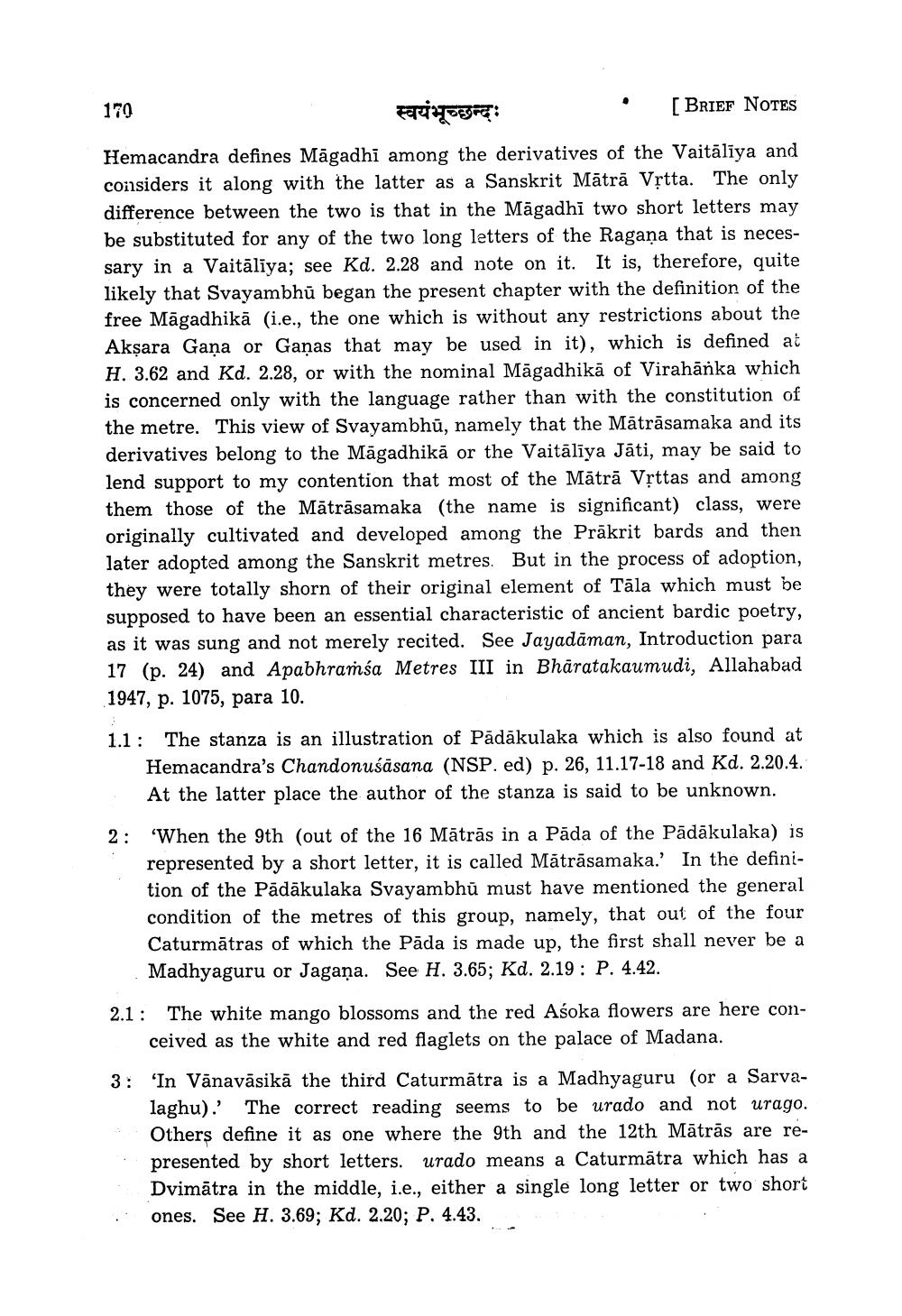________________
[BRIEF NOTES
स्वयंभूच्छन्दः
Hemacandra defines Magadhi among the derivatives of the Vaitālīya and considers it along with the latter as a Sanskrit Mātrā Vṛtta. The only difference between the two is that in the Magadhi two short letters may be substituted for any of the two long letters of the Ragana that is necessary in a Vaitāliya; see Kd. 2.28 and note on it. It is, therefore, quite likely that Svayambhu began the present chapter with the definition of the free Magadhika (i.e., the one which is without any restrictions about the Akṣara Gaṇa or Gaṇas that may be used in it), which is defined at H. 3.62 and Kd. 2.28, or with the nominal Magadhika of Virahanka which is concerned only with the language rather than with the constitution of the metre. This view of Svayambhu, namely that the Mātrāsamaka and its derivatives belong to the Magadhika or the Vaitālīya Jāti, may be said to lend support to my contention that most of the Matrā Vṛttas and among them those of the Matrasamaka (the name is significant) class, were originally cultivated and developed among the Prakrit bards and then later adopted among the Sanskrit metres. But in the process of adoption, they were totally shorn of their original element of Tāla which must be supposed to have been an essential characteristic of ancient bardic poetry, as it was sung and not merely recited. See Jayadaman, Introduction para 17 (p. 24) and Apabhramsa Metres III in Bharatakaumudi, Allahabad 1947, p. 1075, para 10.
1.1:
170
The stanza is an illustration of Pādākulaka which is also found at Hemacandra's Chandonusasana (NSP. ed) p. 26, 11.17-18 and Kd. 2.20.4. At the latter place the author of the stanza is said to be unknown.
2: 'When the 9th (out of the 16 Mātrās in a Pada of the Pādākulaka) is represented by a short letter, it is called Mātrāsamaka.' In the definition of the Pādākulaka Svayambhu must have mentioned the general condition of the metres of this group, namely, that out of the four Caturmatras of which the Pada is made up, the first shall never be a Madhyaguru or Jagana. See H. 3.65; Kd. 2.19 P. 4.42.
2.1:
The white mango blossoms and the red Aśoka flowers are here conceived as the white and red flaglets on the palace of Madana.
3: 'In Vanavāsikā the third Caturmatra is a Madhyaguru (or a Sarvalaghu). The correct reading seems to be urado and not urago. Others define it as one where the 9th and the 12th Mātrās are represented by short letters. urado means a Caturmatra which has a Dvimātra in the middle, i.e., either a single long letter or two short ones. See H. 3.69; Kd. 2.20; P. 4.43.




